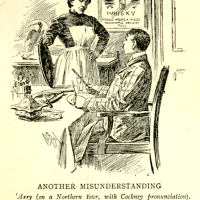 Dorothy and Jack: The Transforming Friendship of Dorothy L. Sayers and C. S. Lewis by Gina Dalfonzo
Dorothy and Jack: The Transforming Friendship of Dorothy L. Sayers and C. S. Lewis by Gina Dalfonzo
My rating: 4 of 5 stars
C.S. Lewis is famous for his comment on a dust jacket autobiographical note that
“There’s no sound I like better than adult male laughter.”
What does this clubbable male Oxbridge bachelor don have to do with Dorothy L. Sayers, author of feminist essays like “Are Woman Human?” and famous mystery writer? While Lewis was good at cultivating male friendships among writers and thinkers, he was also deeply invested in literary friendships with intelligent women. These include conversations on writing and spiritual life with Sr. Penelope, thoughtful poetic dialogues with Ruth Pitter, and the friendship in letters that became the love of his life, Joy Davidman.
And, of course, there is Dorothy L. Sayers: poet, mystery writer, cultural critic, playwright, and Dante translator.
 Sayers and Lewis–Dorothy and Jack, as their friends would call them–began a correspondence of literary appreciation that became a two-decade-long friendship. As I confess in my piece, “The Literary Life in Dorothy L. Sayers’ Murder Mystery, Whose Body? (1923),” I was drawn into reading Sayers through the correspondence. Their surviving letters are bright and intelligent, including dialogues about writing, theology, culture, and spiritual life. They challenge and support one another, offering critique and comradeship in their uniquely overlapping roles as Christian public intellectuals who are literary artisans writing in popular modes while working as somewhat reluctant apologists resisting the miry clay for culture-bound thinking. It is an intriguing story of unusual friends.
Sayers and Lewis–Dorothy and Jack, as their friends would call them–began a correspondence of literary appreciation that became a two-decade-long friendship. As I confess in my piece, “The Literary Life in Dorothy L. Sayers’ Murder Mystery, Whose Body? (1923),” I was drawn into reading Sayers through the correspondence. Their surviving letters are bright and intelligent, including dialogues about writing, theology, culture, and spiritual life. They challenge and support one another, offering critique and comradeship in their uniquely overlapping roles as Christian public intellectuals who are literary artisans writing in popular modes while working as somewhat reluctant apologists resisting the miry clay for culture-bound thinking. It is an intriguing story of unusual friends.
 Thus, I am grateful for Gina Dalfonzo’s enjoyable and thoughtful study, Dorothy and Jack: The Transforming Friendship of Dorothy L. Sayers and C. S. Lewis (2020). With a storytelling style accessible to all curious readers, Dalfonzo captures the story of this unique friendship and how it shaped both of their adult lives. It takes years of study to become an expert in the life and works of either figure, and yet Dalfonzo is able to invite us into the essential elements of their relationship without causing us to be lost in the myriad details of their full lives. I am far from a Sayers scholar, and yet I was able to feel the inside of her story. This is not an easy task for any biographer–let alone someone trying to tell the story of two figures who each produced dozens of books and left thousands of letters on record.
Thus, I am grateful for Gina Dalfonzo’s enjoyable and thoughtful study, Dorothy and Jack: The Transforming Friendship of Dorothy L. Sayers and C. S. Lewis (2020). With a storytelling style accessible to all curious readers, Dalfonzo captures the story of this unique friendship and how it shaped both of their adult lives. It takes years of study to become an expert in the life and works of either figure, and yet Dalfonzo is able to invite us into the essential elements of their relationship without causing us to be lost in the myriad details of their full lives. I am far from a Sayers scholar, and yet I was able to feel the inside of her story. This is not an easy task for any biographer–let alone someone trying to tell the story of two figures who each produced dozens of books and left thousands of letters on record.
 There are some features that I wish were a little stronger in even a short book like this one. I would have liked more moments from their fiction–tiny links to Narnia and Wimsey that capture the voice of the artist in everyday life. I really like how Dalfonzo handled a longer chapter on gender. However, in carefully responding to concerns about Lewis’ ideas of gender, I thought Sayers was overshadowed a bit on this point. As I often feel in reading well-written biographies, I feel like some of the edge is lost in the decades between–that we cannot feel as readers the social horror and public controversy that threatened both of these writers behind the scenes.
There are some features that I wish were a little stronger in even a short book like this one. I would have liked more moments from their fiction–tiny links to Narnia and Wimsey that capture the voice of the artist in everyday life. I really like how Dalfonzo handled a longer chapter on gender. However, in carefully responding to concerns about Lewis’ ideas of gender, I thought Sayers was overshadowed a bit on this point. As I often feel in reading well-written biographies, I feel like some of the edge is lost in the decades between–that we cannot feel as readers the social horror and public controversy that threatened both of these writers behind the scenes.
 Finally, in the preface and in the text, Dalfonzo is offering pushback on a concept that seems strange to me: that men and women cannot be friends. Presumably, she is addressing an American Evangelical culture of sex division. While American Evangelicals are significant readers of Lewis, interest in both Sayers and Lewis is broad and global. Dalfonzo’s story of friendship should not be limited by local concerns.
Finally, in the preface and in the text, Dalfonzo is offering pushback on a concept that seems strange to me: that men and women cannot be friends. Presumably, she is addressing an American Evangelical culture of sex division. While American Evangelicals are significant readers of Lewis, interest in both Sayers and Lewis is broad and global. Dalfonzo’s story of friendship should not be limited by local concerns.
For there is a story of the ages that lives in the pages of Dorothy and Jack. For me, this was a delightful introduction to a figure that intrigues me–D.L. Sayers–in conversation with someone I study in interest–C.S. Lewis.























Pingback: Dorothy and Jack: The Transforming Friendship of Dorothy L. Sayers and C. S. Lewis by Gina Dalfonzo, a Review — A Pilgrim in Narnia – eastelmhurst.a.go.go
Interesting review of a book I haven’t heard of, but would definitely enjoy – thank you! Though I have to say that it’s not just in US churches that men and women are told not to be friends, or that they can’t be friends – it was a very strong policy in the church I grew up in in the UK, and I know other people who’ve had similar experiences from church backgrounds in several different countries. Gina Dalfonzo has also written a book (that I have on my shelf but haven’t yet read!) about singleness in churches, and I imagine that assumptions about who can and can’t be friends is probably something she encountered quite a lot while writing it, as that’s one of the things that makes it so difficult to be a single adult in a church setting – so I expect she’s responding in part to that.
That does make sense–really a sort of religious context. I can see it in my peripheral vision. I appreciate the note.
Thank you Brenton.
Helpful commentary.
Pingback: 2022: My Year in Books: The Infographic | A Pilgrim in Narnia
Pingback: Sharp Novel Minds and Pithy First Lines, with Jane Austen, C.S. Lewis, J.R.R. Tolkien, Dorothy Sayers, Geo. MacDonald, G.K. Chesterton, Ray Bradbury, N.K. Jemisin, Nalo Hopkinson, Margaret Atwood and more! | A Pilgrim in Narnia